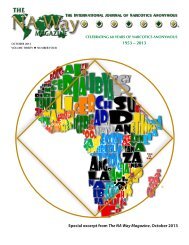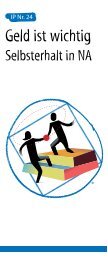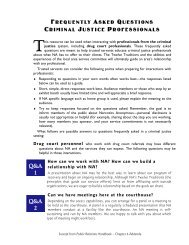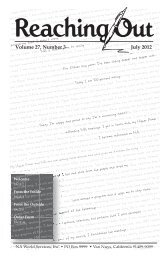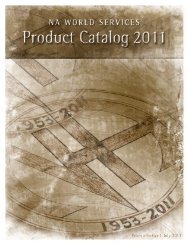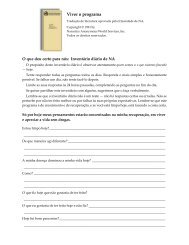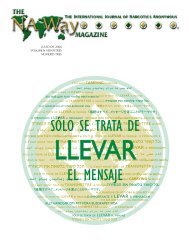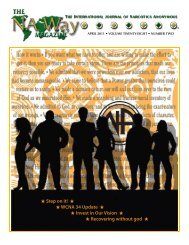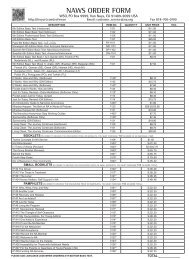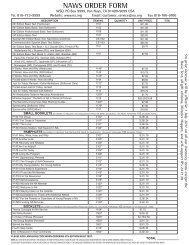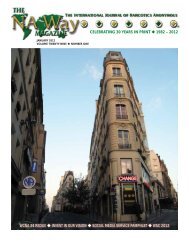Public Relations Handbook - Narcotics Anonymous
Public Relations Handbook - Narcotics Anonymous
Public Relations Handbook - Narcotics Anonymous
Create successful ePaper yourself
Turn your PDF publications into a flip-book with our unique Google optimized e-Paper software.
Most projects depend as much on ideas, information,conscience, and members’ time and willingness as they doon money. If we have the funds needed to carry out aproject but lack the time or ideas, we’d best wait until we’ve gatheredall the needed resources before proceeding. If we don’t, we will havewasted NA service funds.Twelve Concepts for NA ServiceTraining and preparing trusted servantsWhen considering how to train and prepare phoneline volunteers, we can look atwho calls our phonelines: addicts (both potential members and current NA members),nonaddicts, family members and loved ones, and professionals. Our training andpreparation can work to address the opportunities and challenges that arise with eachof the above audiences. The following checklist can help an area develop training thatempowers phoneline volunteers to help addicts find NA and to provide informationabout NA: Responsiveness is a key principle for phoneline service. This means that trustedservants are trained to engage with callers in a sensitive, appropriate, and helpfulmanner. Training for phoneline service will include all those who represent NA on thephoneline: trusted servants, special workers (if there is a regional or areaoffice), and employees of an answering service (if one is used). The area canschedule continual and ongoing training. The area can require that volunteers attend an initial hands-on training (seeChapter Four for details). This training can be supported by a writtendocument of the area’s expectations of phoneline volunteers. An ongoing training program might include providing NA literature (such as theAm I an Addict? pamphlet), discussing NA principles, practicing mock phone calls,and presentations to new volunteers by more experienced members. Oncetrained, volunteers can be provided with basic materials such as a briefdescription of NA, updated meeting lists, and community referral phonenumbers (see referral section). Employees of an answering service will most likely benefit from a currentmeeting schedule and a short, one-page training handout that is regularlyupdated. (See addendum material for an example.) The area may want to identify particular qualities of an ideal phoneline volunteer.Leadership qualities such as integrity, the ability to listen, and sound judgment(see the Concept Four essay in Twelve Concepts for NA Service for more details)are essential in providing phoneline service. Other qualities relevant to phonelineservice are an understanding of the importance of public relations, the ability torelate well to other people, and the abilities to communicate and to stay calmunder pressure. These traits are important because phoneline volunteers oftenhave to perform in higher-pressure situations and because they are likely to bethe first contact that people have with NA. Volunteer guidelines that address issues such as avoiding or explaining NAjargon (such as “it works when you work it,” “home group,” “get a sponsor”),how to get volunteer time slots covered, and how to respond reliably torequests from the public will help support trusted servants in theircommitment.October 2006 | PR <strong>Handbook</strong> | 83



